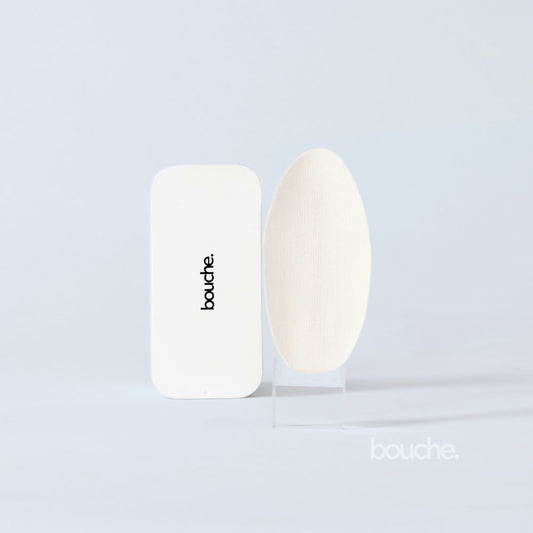An individual's sleep position plays a significant role in the quality of their rest, influencing everything from comfort to the mechanics of breathing. For those who snore or experience breathing difficulties at night, adjusting sleep posture can be a transformative, science-backed strategy for achieving quieter, more restorative sleep. Understanding the direct relationship between how you sleep and how you breathe is the first step toward optimizing your nightly routine for better overall health.
The Connection Between Sleep Position and Snoring
The position of the body during sleep directly impacts the airway. Snoring is the sound that occurs when air cannot move freely through the nose and throat, causing the surrounding tissues to vibrate. Certain sleep postures can exacerbate this by causing the airway to narrow, which increases tissue vibration and the loudness of snoring.
Do Sleeping Positions Affect Snoring?
Yes, sleeping positions have a direct and significant effect on snoring. The primary mechanism involves gravity's influence on the tongue, soft palate, and tissues in the throat.
Can Sleeping Position Cause Breathing Problems?
Sleeping on the back is widely considered the worst position for individuals prone to snoring and is linked to more severe symptoms of obstructive sleep apnea (OSA). In the supine (back-sleeping) position, gravity pulls the base of the tongue and soft palate backward, causing them to collapse into the back of the throat. This partially blocks the airway, forcing air through a narrower passage and creating the vibrations that result in snoring. More than half of people with OSA experience a worsening of their condition when sleeping on their back.
Which Sleeping Position is Best for Reducing Snoring?
Sleep experts consistently recommend side sleeping as the best position to reduce snoring and alleviate symptoms of sleep apnea. When lying on your side, gravity's effect on the throat tissues is minimized, which helps keep the airway open and stable. This posture prevents the tongue from falling back and obstructing airflow, leading to quieter and smoother breathing throughout the night.
Is It Better to Lay Flat or Elevated for Snoring?
Elevating the head and upper body is generally better for reducing snoring compared to lying flat. Sleeping on an incline helps open up nasal airway passages and reduces pressure, which can prevent the airway from collapsing. This can be achieved using a wedge pillow or by raising the head of the bed frame. Simply adding extra pillows is less effective, as this can cause the neck to bend at an angle that still constricts the airway.
In Which Sleeping Position Does Snoring Become Louder?
Snoring is typically most frequent and loudest when sleeping on your back. The significant narrowing of the airway in this position forces airflow to become more turbulent, which increases the vibration of throat tissues and amplifies the sound of snoring.
Tips for Choosing the Right Sleep Position for Better Breathing
Making a conscious effort to change your sleep habits can lead to significant improvements in breathing and sleep quality.
- Train Yourself to Sleep on Your Side: To avoid rolling onto your back, use a full-body pillow for support. Another method involves placing pillows behind your back to create a barrier.
- Elevate Your Head: Use a wedge pillow or adjustable bed to sleep at a slight incline, which promotes a more open airway.
- Promote Nasal Breathing: Regardless of position, ensuring you breathe through your nose is critical. Nasal breathing filters and warms air, supports optimal oxygen levels, and helps keep the airway stable.
For those committed to optimizing their sleep, leveraging science-backed tools can provide crucial support. Bouche's medical-grade mouth tape is designed to promote the natural and superior function of nasal breathing during sleep. By ensuring the lips remain comfortably sealed, it encourages consistent airflow through the nose, which can reduce the airway vibrations that cause snoring. For those who experience nasal congestion, pairing the mouth tape with nasal strips can help further open the airways for even better airflow. For a comprehensive approach, the Breathe Better Kit offers a combined solution.
These tools are particularly beneficial for side sleepers aiming to maximize the benefits of their chosen position. Bouche products are crafted with hypoallergenic materials for sensitive skin and are compatible with CPAP machines, offering a non-invasive way to restore the body’s intended breathing patterns for deeper, more restorative rest.
Conclusion: The Impact of Sleep Position on Breathing and Snoring
Your sleeping position is a powerful lever for influencing nightly breathing and snoring. Back sleeping significantly increases the likelihood of airway obstruction, while side sleeping and elevating the head are proven strategies for keeping the airway open and reducing snoring. By consciously choosing a better sleep posture and incorporating tools that support nasal breathing, you can take control of your sleep quality, reduce snoring, and improve your overall health and vitality.
Frequently Asked Questions
Q. What’s the best sleep position for breathing?
Side sleeping is considered the best position for breathing, as it helps keep the airway open and prevents the tongue and soft tissues from collapsing into the throat.
Q. Does sleeping on your back cause snoring?
Yes, sleeping on your back is a primary contributor to snoring for many people. Gravity pulls the tongue and soft palate backward, narrowing the airway and causing tissues to vibrate as you breathe.
Q. Can sleep posture affect oxygen levels?
Yes, sleep posture can affect oxygen levels, particularly in individuals with sleep apnea. Positions that narrow or obstruct the airway, like back sleeping, can lead to repeated pauses in breathing (apneas) or shallow breathing (hypopneas), which can lower blood oxygen saturation.
Q. How does mouth tape help side sleepers?
Mouth tape helps side sleepers by ensuring they consistently breathe through their nose. Even in an optimal sleeping position, mouth breathing can still lead to snoring and dry mouth. A product like Bouche Mouth Tape promotes stable nasal airflow, which may reduce snoring and improve sleep quality for those who have already adopted a side-sleeping posture.
Q. Should I change my sleep position?
If you snore, often wake up tired, or have been diagnosed with mild obstructive sleep apnea, changing your sleep position could offer significant benefits. Transitioning from back sleeping to side sleeping is a recommended first step for improving airway function during sleep.






